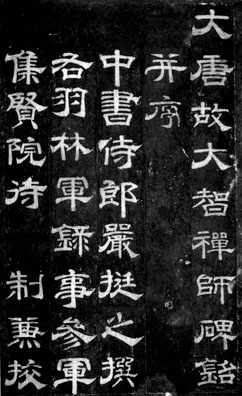|
|
|||
|
Between the time of Wang
Xizhi and the beginning of the Tang dynasty, calligraphy had come to be seen
as a vehicle for expressing one's social status and learning. There was also
a very close relationship between poetry and calligraphy as practiced by the
educated elite from this time forward. More and more people who practiced
calligraphy sought to develop facility with a variety of styles and script
types. One of the means by which they did so was copying familiar texts that
contained a wide range of simple and complicated characters. |
|||
|
Below are two examples of
handwritten copies of the Thousand character classic, a children's
primer written during the Liang dynasty (502-556 AD). Zhiyong, the descendant
of Wang Xizhi who was also Yu Shinan's teacher, was said to have made eight
hundred copies of this text for distribution among various Budhhist temples
in his native Zhejiang province. |
|||
|
Why do you think well
known texts were considered good sources for calligraphy practice? Might the
content of the Thousand character classic have been an important factor in
its selection for calligraphy practice? Why or why not? |
|||
|
Do you think that these
calligraphic examples might be close reproductions of an original, or do you
think the writers are demonstrating their own personal style? |
|||
|
|
|||
|
|
|||
|
|||
|
|||
|
Although the Tang period is closely associated with the standard script as a result of its being adopted by the court, other types continued to be in use. Look at the example at the right, which is done in a script most common in Han times. Do you think this type of writing may have seemed old fashioned when compared with the regular script examples of the early Tang court calligraphy shown above? What do you think might have made this style of writing attractive or necessary in this later time period? |
|||
|
|||
|
Move on to Religious Writings
|
|||



